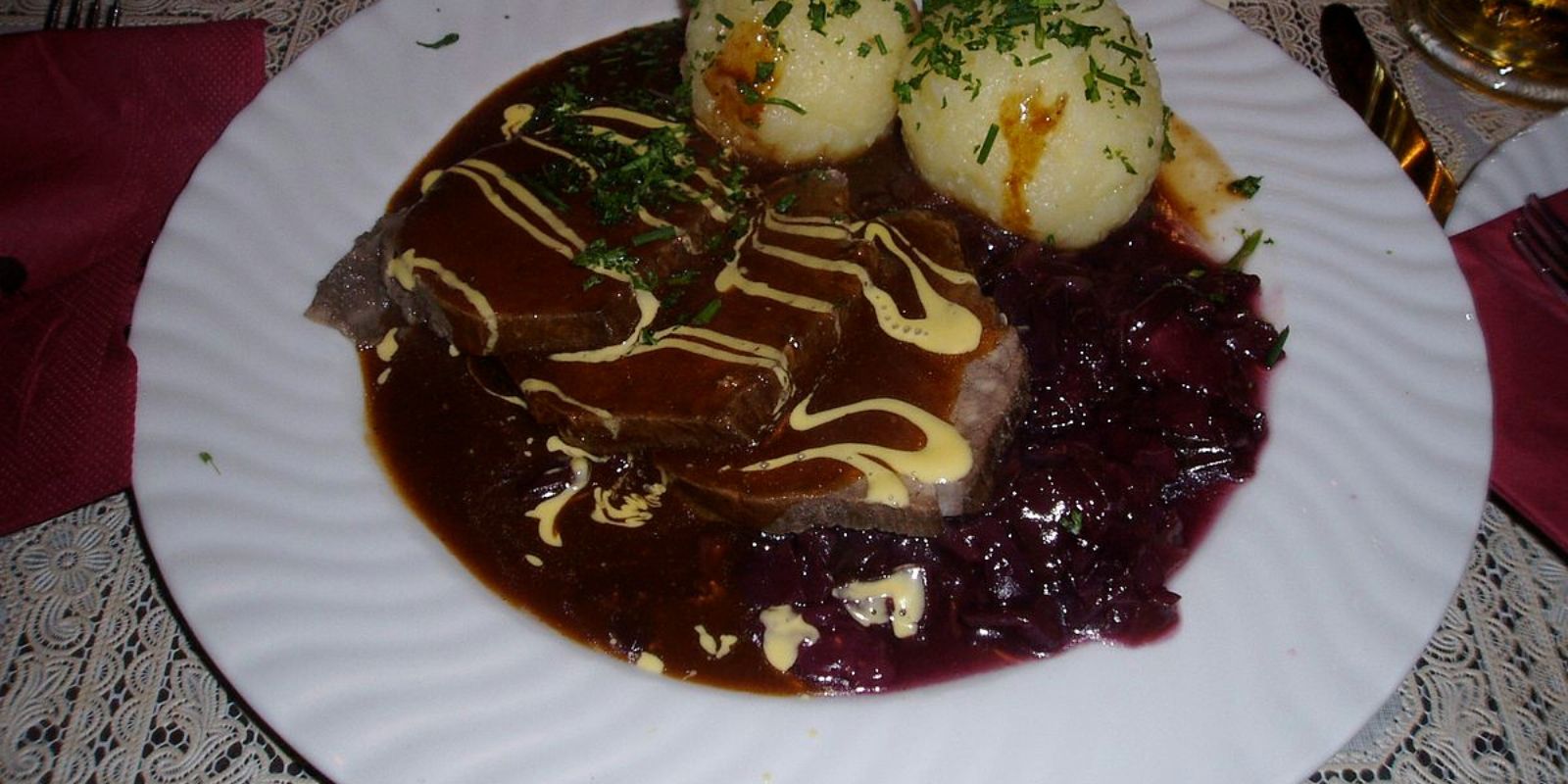Introduction:
Embark on a culinary adventure through the heart of Germany with the authentic Sauerbraten recipe. Sauerbraten, a beloved German dish, is a flavorful pot roast traditionally marinated in a unique blend of spices, vinegar, and aromatics. This dish holds a special place in German culture, representing the rich culinary heritage passed down through generations. Join me as we delve into the history, preparation, and delightful nuances of crafting the perfect Sauerbraten.
The Origins of Sauerbraten:
Sauerbraten has deep roots in German cuisine, dating back centuries. The name itself reflects the dish’s preparation method, with “sauer” meaning sour and “braten” meaning roast. Originating in regions like Rhineland and Franconia, Sauerbraten became a staple dish at festive occasions, family gatherings, and special celebrations.
Marination Magic:
The key to a truly authentic Sauerbraten lies in its marination process. The meat, typically beef (though other meats like lamb or pork can be used), is marinated for several days in a concoction of vinegar, water, and an array of spices. This infusion imparts a unique tangy flavor to the meat, creating a harmonious blend of sweet, sour, and savory notes.
To prepare the marinade, start with a mixture of red wine vinegar, water, and a touch of sugar to balance the acidity. Aromatic spices such as juniper berries, cloves, bay leaves, and mustard seeds are essential contributors to the distinctive flavor profile. Allow the meat to soak in this flavorful elixir for at least three to four days, ensuring the full absorption of the marinade’s essence.
The Choice of Meat:
While beef is the traditional choice for Sauerbraten, you can experiment with other meats to suit your preferences. Some variations include using lamb or pork, each bringing its own unique texture and flavor to the dish. Choose a cut with a good balance of lean meat and marbling, such as rump roast or bottom round, to ensure a tender and succulent result.
The Art of Slow Cooking:
Once the marination process is complete, it’s time to embrace the slow cooking method that defines Sauerbraten. The marinated meat is seared to lock in the flavors and then braised in the same marinade, along with additional broth or stock. This slow and gentle cooking process allows the meat to become tender while absorbing the rich flavors of the marinade.
Accompanying the meat are root vegetables like carrots, onions, and celery, adding depth and complexity to the dish. Some recipes also call for the addition of gingersnaps or gingerbread cookies to the sauce, providing a sweet and spicy undertone that complements the overall flavor profile.
Serving Traditions:
Sauerbraten is often served with classic German side dishes like Kartoffelklöße (potato dumplings) or Kartoffelsalat (potato salad). The tangy and robust flavor of Sauerbraten pairs well with the hearty and comforting nature of these accompaniments. A dollop of creamy applesauce or a sprinkling of fresh herbs can elevate the presentation and add a touch of brightness to the dish.
Celebrating with Sauerbraten:
Beyond its exquisite taste, Sauerbraten holds cultural significance in German celebrations. It is a dish that brings families and friends together, symbolizing warmth, tradition, and the joy of shared meals. Whether enjoyed during Oktoberfest, Christmas, or any special occasion, Sauerbraten is a testament to the enduring culinary traditions that unite generations.
Conclusion:
In conclusion, the Sauerbraten recipe encapsulates the essence of German culinary heritage. From its origins rooted in centuries-old traditions to the carefully crafted marination process and slow cooking method, each step contributes to the creation of a dish that is both comforting and full of character. As you embark on your Sauerbraten journey, savor not only the flavors but also the rich history and cultural significance that make this dish a true gem in the tapestry of German cuisine. Prost!

